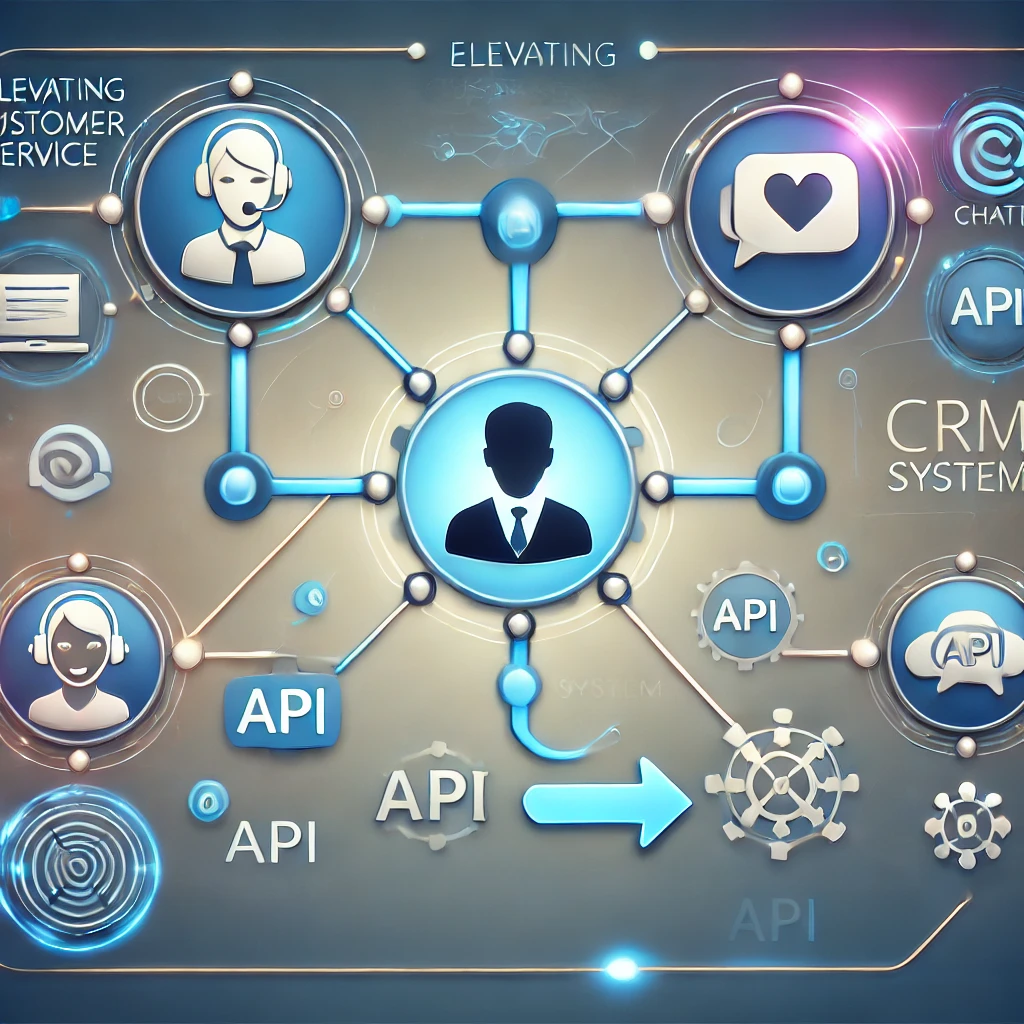Automation case studies reveal how real businesses harness the power of API integration to drive efficiency, streamline operations, and eliminate repetitive, time-consuming tasks. In today’s business landscape, the pressure to optimize workflows and minimize costs is higher than ever, and automation case studies provide compelling evidence of how organizations can achieve these goals. Through carefully crafted API integrations, companies of all sizes are enhancing productivity, improving accuracy, and freeing up valuable resources to focus on strategic growth.
By delving into these automation case studies, businesses can gain a clear, practical understanding of the transformative potential that automation holds. These case studies highlight real-world examples where automation has replaced manual tasks, reduced errors, and allowed teams to operate more fluidly across departments. From customer service and marketing to eCommerce fulfillment and finance, the impact of API automation is wide-ranging, offering tailored solutions that address the unique demands of each sector.
For businesses aiming to stay competitive, automation case studies provide more than just a roadmap for efficient operations; they also offer a preview of the digital innovations shaping the future. By exploring how other companies have successfully used API automation to achieve streamlined workflows and enhanced productivity, you can uncover practical, actionable strategies to support growth, save time, and empower your teams. To dive even deeper into automation strategies, visit our blog, Task Automation That Transforms: 3 Smart API Ideas to Save Time and Stay Organized, where we explore innovative ways to make automation work for your business.
Table of Contents
Elevating Customer Service with API Integration
In today’s fast-paced digital world, exceptional customer service can be the differentiator between success and failure for many businesses. Yet, customer service departments frequently grapple with high volumes of inquiries, repetitive tasks, and the need to deliver timely, accurate responses. Automation case studies demonstrate how companies leverage API integration to streamline these processes, improve customer satisfaction, and optimize support efficiency.
By linking customer support platforms like Zendesk with their CRM systems via API, companies enable a seamless flow of information. This integration allows customer service agents to access a customer’s complete interaction history instantly, from past purchase details to previous support tickets, and relevant personal information. This reduces the need to toggle between platforms or search for data manually, saving significant time and energy while enabling agents to provide fast, informed responses.
One prominent example involves a company that integrated their email and chatbot support systems with Zendesk through API connections. With this setup, any new customer request – whether sent via email, live chat, or another channel – is automatically transformed into a ticket in Zendesk. The API integration further ensures this ticket syncs with CRM data, pulling in essential information such as customer contact details, prior interactions, and purchase history.
Benefits of This API Integration:
- Increased Efficiency: Support agents no longer need to enter data manually or search through multiple platforms to find the information they need. Instead, it’s readily available in Zendesk, cutting down on administrative tasks.
- Faster Response Times: With automated ticket generation and data syncing, agents can dive straight into issue resolution without delay, enhancing response speed and reducing customer wait times.
- Enhanced Personalization: By instantly accessing comprehensive customer information, agents can offer a personalized experience, addressing customers by name and referencing previous interactions, which adds a personal touch that customers appreciate.
The power of this integration lies in its ability to streamline data flow across multiple systems, ensuring agents have accurate, up-to-date information for each interaction. This type of setup, as seen in automation case studies, doesn’t just improve internal efficiency—it directly contributes to better customer experiences. Quick response times and tailored support mean customers feel valued and heard, which ultimately fosters greater loyalty and satisfaction.
Studies on API-driven support automation also show a notable reduction in human error, as automated systems handle the data transfer between platforms. When agents don’t have to manually enter or retrieve customer details, errors from data input are significantly minimized. This, in turn, creates a reliable support system that boosts customer trust and satisfaction.

Real Impact of API Integration in Customer Support:
Automation case studies in the realm of customer support consistently highlight significant improvements in operational efficiency and service outcomes. Companies that implement API integrations within their support processes report measurable, impressive advancements, showcasing the transformative power of automation. For example, many automation case studies reveal a 30% or more reduction in ticket resolution times. This efficiency gain is attributed to the real-time access to essential customer data, empowering agents with the information they need instantly and removing delays often caused by manually retrieving customer details.
Beyond faster response times, automation case studies also demonstrate considerable improvements in key customer feedback metrics. After implementing API-driven automation, companies frequently see an upward trend in both Customer Satisfaction (CSAT) scores and Net Promoter Scores (NPS). With the immediate syncing of CRM data, agents can handle inquiries with greater context and personalization, leading to more accurate and tailored responses. This shift towards a more responsive, personalized approach—evident across numerous automation case studies—not only improves the customer experience but also fosters increased brand loyalty, as customers feel that their needs are met efficiently and thoughtfully.
The evidence provided by automation case studies underscores how API integration serves as an invaluable tool for companies striving to maintain superior customer service in highly competitive markets. Businesses that adopt API automation gain a strategic advantage, as seen in automation case studies where support agents are not only empowered to handle queries swiftly but are also better equipped to handle complex issues with minimal manual intervention. This approach streamlines workflows, reduces human error, and creates a consistent support experience that customers value.
By studying automation case studies, companies can better understand how API integration can strengthen their customer support framework and align with long-term business goals. In these case studies, API-driven automation is consistently shown to improve response accuracy, enhance agent productivity, and contribute to positive customer interactions.
improvements build a foundation for sustained customer satisfaction and loyalty, positioning companies as reliable and customer-centric leaders in their fields. Automation case studies thus serve as both a roadmap and a testament to the efficiency and effectiveness of API integration, helping companies turn everyday customer interactions into opportunities for exceptional service and growth.

Accelerating eCommerce Order Fulfillment Through Automation
In eCommerce, efficient order fulfillment is crucial to maintaining customer satisfaction, especially during peak seasons. Automation case studies highlight companies that streamline order management by connecting their eCommerce platforms (like Shopify or WooCommerce) with third-party logistics (3PL) providers or internal order management systems via APIs.
For instance, when a customer places an order, API integration can trigger automatic inventory updates, create packing lists, and communicate with the shipping provider to schedule pickups. By automating these processes, companies reduce the risk of overselling products, improve inventory accuracy, and shorten order processing times.
One company implemented an API integration that linked their online store with multiple warehouses. Whenever an order was placed, the system instantly checked inventory levels, selected the closest warehouse, and notified the fulfillment center. This integration led to a 30% reduction in fulfillment time and allowed the company to scale its operations without adding extra staff. Such automation case studies underscore how eCommerce businesses can handle larger volumes efficiently by automating fulfillment tasks.

Optimizing Marketing Campaigns with CRM Integration
Effective marketing is all about delivering timely, targeted messages to the right audience, and automation case studies consistently reveal the advantages of linking CRM systems with marketing automation tools through API integration. By doing so, companies can streamline data flow, automatically sync customer behavior and preferences, and ensure that marketing messages remain relevant and well-timed. For many businesses, audience segmentation and personalized outreach are challenging to execute manually; API integration solves this by connecting CRMs to marketing platforms like Mailchimp, HubSpot, or Marketo, allowing customer data to flow seamlessly between systems.
Consider a travel company that integrated its CRM with Mailchimp through an API connection, establishing a real-time data pipeline for customer engagement. Every time a user interacted with the company’s website—whether by browsing a vacation package, saving an itinerary, or even clicking on specific articles—the CRM instantly captured these actions. This data was then automatically fed into Mailchimp, where it triggered tailored email campaigns based on the user’s specific interests.
For instance, if a user frequently viewed beach destinations, the API would ensure they received special offers or tips about beach vacation packages. This level of personalized communication not only led to a 20% boost in email open rates but also increased conversions by 15%, as customers were more likely to engage with offers relevant to their interests.
These automation case studies illustrate how companies can save countless hours on campaign setup, as API integrations automate audience segmentation and messaging triggers. Marketing teams are freed from manually sorting through data or crafting individual messages, allowing them to focus on developing creative and strategic aspects of campaigns. The CRM integration manages the technical work of data processing, updating customer segments in real-time based on the latest interactions, and ensuring that customers are grouped and contacted with precision.
In addition, automation case studies reveal the value of these integrations in creating a more holistic view of customer behavior. With CRM and marketing platforms working in sync, companies can build comprehensive customer profiles that include purchase history, engagement patterns, and preferences. This enriched data enables marketers to craft multi-channel campaigns that reach customers at various touchpoints—email, social media, and even SMS—with messages tailored to their preferences. This approach not only fosters customer loyalty by showing a deep understanding of individual needs but also improves the return on investment (ROI) for each campaign, as marketing dollars are allocated toward highly relevant, well-targeted outreach.
Through these automation case studies, it’s evident that CRM integration provides a major advantage in maintaining the relevance and effectiveness of marketing efforts. By automating data syncing and segmentation, companies can ensure that their messages align with customer needs in real-time. With the technical heavy-lifting handled by the integration, marketing teams can concentrate on crafting compelling narratives and strategic plans, confident that their campaigns are reaching the right people with the right message at the right time.

Streamlining Financial Operations with Automated Invoice Processing
For finance departments, handling invoices and payments can be a time-consuming and complex task, demanding meticulous attention to detail and significant manual effort. From generating invoices to tracking payment statuses and recording transactions, these processes often consume valuable time and resources that could be better spent on strategic financial planning. Automation case studies demonstrate that by implementing API integrations between ERP systems and accounting software, companies can significantly streamline these processes, leading to greater operational efficiency and more accurate financial reporting.
With API automation, companies can link their Enterprise Resource Planning (ERP) systems directly to accounting platforms like QuickBooks, Xero, or SAP. This integration enables real-time data synchronization, reducing the chances of human error and ensuring that financial records remain consistently accurate. Automation case studies reveal that, by automating invoicing and payment tracking, companies not only speed up cash flow but also create a seamless financial ecosystem where all records and documents are up-to-date, organized, and accessible in one place.
Take the example of a consulting firm that integrated its ERP system with QuickBooks through an API connection. In this setup, every time a project milestone was completed, the ERP system automatically triggered an invoice in QuickBooks, eliminating the need for manual entries and ensuring that clients received invoices promptly. This automation reduced the invoicing time by 40%, freeing up the finance team to focus on high-value activities like financial analysis, budget forecasting, and strategy development rather than routine administrative work.
Automation case studies also show how automated invoice processing can enhance cash flow management. By reducing delays in invoice generation and eliminating errors, companies improve the accuracy and timeliness of payment processing. Faster invoicing means quicker payments, which leads to a more predictable and stable cash flow. In addition, automated reminders can be set to notify clients of upcoming payment deadlines or overdue invoices, further reducing delays in receivables.
Moreover, by integrating APIs into financial workflows, companies create a unified financial dashboard where stakeholders can track payment status, view financial health indicators, and generate reports with ease. As automation case studies illustrate, this holistic view of financial operations enables finance teams to make data-driven decisions, identify trends, and proactively manage budgets. The ability to automate invoice processing and connect various financial platforms means fewer inconsistencies in records, more time for strategic planning, and an overall reduction in operational costs.
In essence, API-driven automation transforms financial operations from a labor-intensive process into a streamlined, error-resistant system that supports broader organizational goals. Through real-life automation case studies, we see how businesses leverage these integrations to foster more efficient, accurate, and financially sound operations, freeing finance teams to focus on growth and innovation rather than manual tasks.
Conclusion
These automation case studies underscore the transformative impact that API integration can have on financial operations. By implementing automated systems for invoicing, payment processing, and financial data synchronization, companies can ensure that financial records remain consistent and accurate at all times. This consistency minimizes the risk of errors, enhances transparency, and builds trust within the organization, as stakeholders can rely on up-to-date financial information to make informed decisions.
Moreover, the efficiency gained through API-driven automation leads to a more predictable and robust cash flow. With quicker, automated invoicing and seamless payment tracking, companies experience fewer delays in receivables, which directly contributes to stronger liquidity and financial stability. The financial team, relieved from repetitive manual tasks, can now focus on high-priority areas such as financial forecasting, strategic analysis, and budget planning. This shift not only improves the productivity of finance departments but also aligns financial operations with the organization’s broader growth objectives.
In essence, these automation case studies demonstrate that API integration is not merely a tool for efficiency; it is a strategic enabler that empowers companies to maintain financial accuracy, support sustainable cash flow, and drive long-term success. By investing in API integration, businesses can unlock the full potential of their finance teams, transforming them into proactive, data-driven contributors to the company’s overall resilience and growth.
